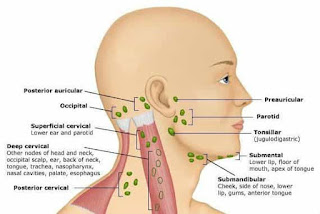Do you know how many bones does a baby have? It is a blind belief that babies have fewer bones than adults. But here the facts about bones are totally different. In fact, the children have more bones than adults, summing up to 350! Mostly, they are in the form of cartilage and might not be stronger. Whereas adults have only 206 bones in their body. It is one of the amazing facts about bones that more than hundred bones disappear as a baby grows to become an adult.
The bones of babies are softer and flexible which need careful handling. When the cartilage and bones merge together, it constructs a stronger bone. In case of fractures and damages the concerned person needs to go to the doctor. Meanwhile, there are possibilities to set their bones immediately. The skeletal structure is so important for a man and there should be proper practice of body movements.
The bones of babies are softer and flexible which need careful handling. When the cartilage and bones merge together, it constructs a stronger bone. In case of fractures and damages the concerned person needs to go to the doctor. Meanwhile, there are possibilities to set their bones immediately. The skeletal structure is so important for a man and there should be proper practice of body movements.
Do you know how many bones does a baby have? It is a blind belief that babies have fewer bones than adults. But here the facts about bones are totally different. In fact, the children have more bones than adults, summing up to 350! Mostly, they are in the form of cartilage and might not be stronger. Whereas adults have only 206 bones in their body. It is one of the amazing facts about bones that more than hundred bones disappear as a baby grows to become an adult.
The bones of babies are softer and flexible which need careful handling. When the cartilage and bones merge together, it constructs a stronger bone. In case of fractures and damages the concerned person needs to go to the doctor. Meanwhile, there are possibilities to set their bones immediately. The skeletal structure is so important for a man and there should be proper practice of body movements.
The spine bone acts as the base and anchor for all other bones, which is vital for the skeletal framework of the body. There are 33 spine bones which are joined and work together to form the vertebral column. The 24 bones, to the top, are moveable with the remaining nine bones are fused together. The less flexible joints in the spine bones provide limited freedom of movement.
The bones in general can be classified into two types namely the compact bones and the trabecular bones. The compact bones are the denser bones, which cover 80 percent of the total body bone mass and the trabecular bones are spongy in nature. They cover the remaining 20 percent.
⇛ The largest bone of the human body is the femur which you can find in the thigh. And the smallest bone is the stirrup which forms the ears.
⇛ Everybody should wear a helmet and protective pads or masks, while driving or involving in any sports activity.
⇛ To support the bones, consume the daily food items with balanced percentage of calcium and vitamin D content.
⇛ By practicing the weight bearing exercise like walking, jogging, climbing, dancing, and running there will be expansion and regular growth to strengthen your bones.
⇛ You should avoid alcohol consumption and smoking which results in the bone diseases like osteoporosis.










